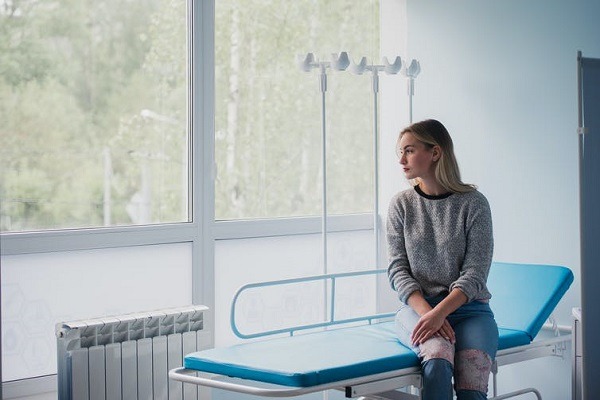Erica Millar, La Trobe University
The COVID-19 crisis has starkly revealed the patchy and precarious provision of abortion in Australia, deepening existing inequalities in access.
What was already an expensive procedure may be even less attainable for many women facing financial strain during the pandemic.
Meanwhile, a shortage of staff and resources is likely to be affecting access for many women seeking an abortion – particularly those in regional and rural areas.
This all comes at a time when advocates predict unwanted pregnancies could rise due to increased rates of domestic violence, reproductive coercion and financial stress.
Read more: Coronavirus and ‘domestic terrorism’: how to stop family violence under lockdown
It’s already expensive
Even before COVID-19, one in three women seeking an abortion found it “difficult” or “very difficult” to finance the procedure. Many skipped paying bills or borrowed money so they could access care quickly.
Costs vary depending on where you live, the abortion method, and the gestational age of pregnancy. A study published in 2017 reported after the Medicare rebate, a first trimester abortion costs, on average:
- A$560 for a medical abortion, which involves taking two medications 24-48 hours apart (currently available to nine weeks’ gestation)
- A$470 for a surgical abortion.
With the exception of South Australia and the Northern Territory, most public hospitals around Australia don’t provide abortions.
Even where they do, demand far outstrips supply, meaning public hospitals routinely refer patients to private clinics.

The costs for abortion would currently be magnified for those who are newly unemployed and for temporary visa holders and international students excluded from government payments.
During the coronavirus pandemic, abortion referral services have reported an increase in calls from migrant women who are concerned about their ability to pay for abortions. Meanwhile, services that offer financial assistance for abortion are concerned they will not be able to meet the rising demand for assistance.
A shortage of resources
In April, suppliers cancelled orders of personal protective equipment (PPE) to abortion clinics on the basis these supplies were reserved for “health professionals”.
Suppliers might be forgiven for assuming medical procedures relegated to the private sector are elective. Indeed, the idea abortion is a non-essential procedure is a well-worn anti-abortion trope.
Read more: Early medical abortion is legal across Australia but rural women often don’t have access to it
While the federal government confirmed abortion was “essential” during the halt on elective procedures, they didn’t offer much support. Instead they told clinics to source PPE supplies from Chemist Warehouse.
Although the supply of PPE to abortion clinics is no longer under immediate threat, the industry continues to face resource constraints.
This includes a shortage of providers.
Lack of access in regional and rural areas
Abortion is one of the most commonly performed gynaecological procedures, and early medical abortion should be readily available in primary care settings.
But abortion care is not integrated into medical education or training. The shortage of health professionals trained and willing to provide surgical abortion, and the failure of governments to require public hospitals to take responsibility for local provision, means abortion is virtually inaccessible in much of rural and regional Australia.
Read more: Here’s why there should be no gestational limits for abortion
The few clinics that offer surgical abortion outside urban centres often depend on fly-in-fly-out workers, who rely on domestic air travel to deliver abortion care.
With domestic travel dramatically reduced during COVID-19, some private clinics have begun using private charter flights to ensure women in rural and regional Australia can still access abortion. But the cost of this is not sustainable.
Similarly, a clinic in Melbourne’s eastern suburbs, one of the largest providers of abortion after 20 weeks’ gestation in Australia, relies on interstate doctors. The clinic has had to limit this service, resulting in some women continuing with pregnancies they would have otherwise terminated.
The provision of later-term abortions is in such short supply in Australia that this single private clinic services women from across the country.
Women may require abortion after 20 weeks for a range of reasons, including maternal health, foetal abnormalities, and delayed diagnosis of pregnancy.
Many of these women, we can assume, are also affected by travel restrictions.
We could be doing more via telehealth
Early medical abortion can be delivered via telehealth. In this scenario, medications are mailed to the patient after some local tests and a remote consultation with a doctor via phone or video call. This method is especially appropriate now as we continue to practise social distancing.
Marie Stopes Australia, a large provider of family planning and abortion, reported demand for this service had gone up 25% during the pandemic.
The Royal Australian and New Zealand College of Obstetricians and Gynaecologists has argued the importance of this option as we navigate COVID-19.

Notably, abortion law in South Australia prevents early medical abortion through telehealth.
Other jurisdictions with similar laws, including the UK and the Republic of Ireland, moved quickly to allow early medical abortion through telehealth during the pandemic.
Despite early signs the South Australian government would use emergency powers to make a similar move, and significant community mobilisation, it has so far failed to act.
COVID-19 highlights bigger problems
Governments should act to ensure those requiring abortion can access it during the current crisis, including by expanding the provision of early medical abortion via telehealth as broadly as possible.
Yet the COVID-19 crisis has revealed we need longer-term investments to ensure women can access this essential and time-sensitive procedure.
This will entail a commitment to the public provision of abortion, including within public hospitals, and the systemic training of health professionals in abortion care.
Read more: One in six Australian women in their 30s have had an abortion – and we’re starting to understand why
Erica Millar, Lecturer, La Trobe University
This article is republished from The Conversation under a Creative Commons license. Read the original article.



